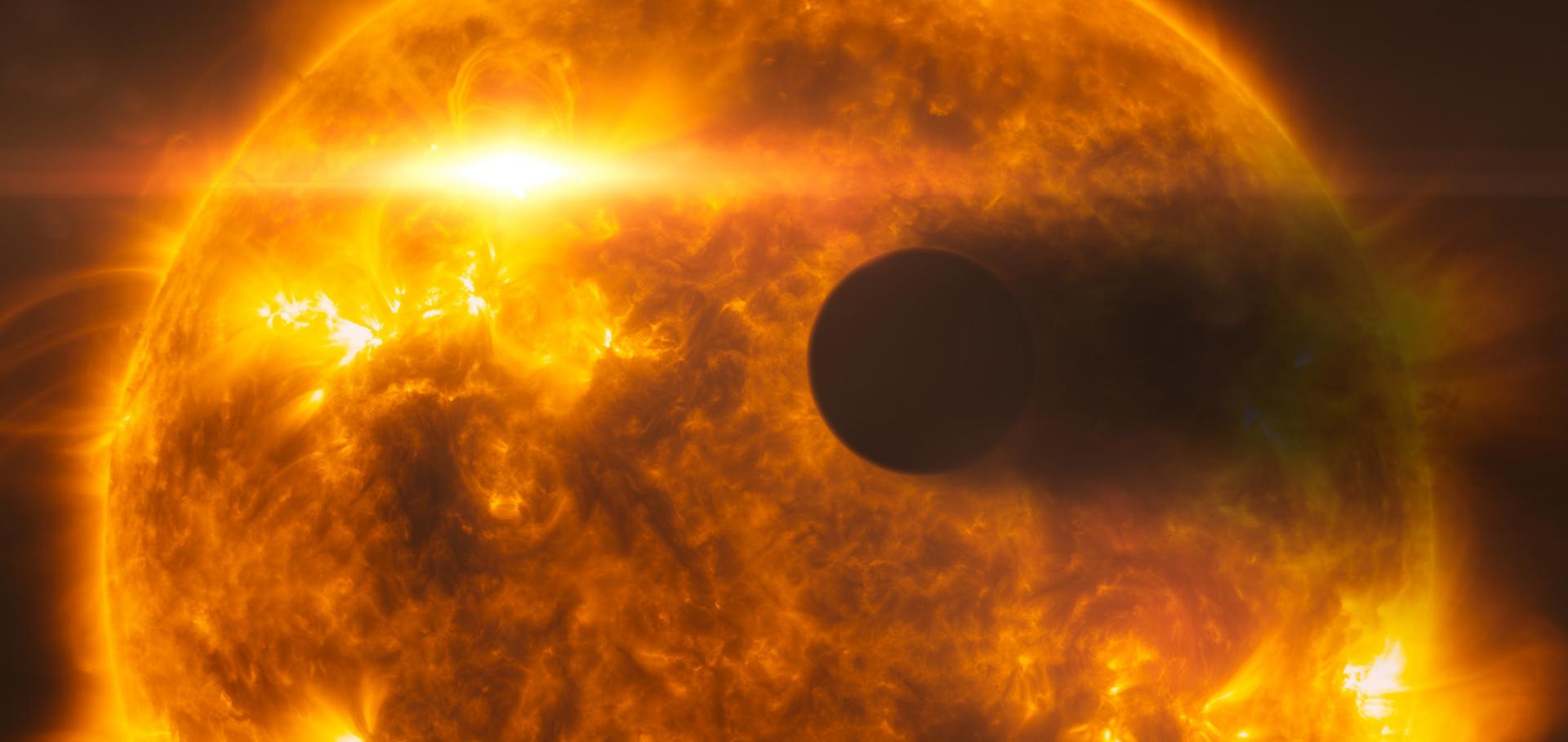Granulation on a quiet K dwarf: HD 166620 I. Spectral signatures as a function of line-formation temperature
Monthly Notices of the Royal Astronomical Society Oxford University Press 543:3 (2025) 1974-1994
Abstract:
As radial velocity (RV) spectrographs reach unprecedented precision and stability below 1 m s, the challenge of granulation in the context of exoplanet detection has intensified. Despite promising advancements in post-processing tools, granulation remains a significant concern for the EPRV (extremely precise radial velocity) community. We present a pilot study to detect and characterize granulation using the High-Accuracy Radial-velocity Planet Searcher for the Northern hemisphere (HARPS-N) spectrograph. We observed HD 166620, a K2 star in the Maunder Minimum phase, intensely for two successive nights, expecting granulation to be the dominant nightly noise source in the absence of strong magnetic activity. After correcting for a newly identified instrumental signature, originating from CCD illumination variations under optimal seeing conditions, we detected the granulation signal using structure-function (SF) analysis and a single-component Gaussian process (GP) model. The granulation signal has a characteristic time-scale of min, within 1, and a standard deviation of cm s, within 3 of the predicted value. By examining spectra and RVs as a function of line formation temperature, we investigated the sensitivity of granulation-induced RV variations across different photospheric layers. We extracted RVs from various photospheric depths using both the line-by-line and cross-correlation function methods to mitigate any extraction method biases. Our findings indicate that granulation variability is detectable in both temperature bins, with the cooler bins, corresponding to the shallower layers of the photosphere, aligning more closely with predicted values.Using Doppler Imaging to model stellar activity and search for planets around Sun-like stars
(2025)
Using Doppler Imaging to model stellar activity and search for planets around Sun-like stars
Monthly Notices of the Royal Astronomical Society Oxford University Press (OUP) (2025) staf1337
Abstract:
Abstract Doppler Imaging (DI) is a well-established technique to map a physical field at a stellar surface from a time series of high-resolution spectra. In this proof-of-concept study, we aim to show that traditional DI algorithms, originally designed for rapidly-rotating stars, have also the ability to model the activity of Sun-like stars, when observed with new-generation highly-stable spectrographs, and search for low-mass planets around them. We used DI to retrieve the relative brightness distribution at the surface of the Sun from radial velocity (RV) observations collected by HARPS-N between 2022 and 2024. The brightness maps obtained with DI have a typical angular resolution of ~36○ and are a good match to low-resolution disc-resolved Dopplergrams of the Sun at epochs when the absolute, disc-integrated RV exceeds ~2 m s−1. The RV residuals after DI correction exhibit a dispersion of about 0.6 m s−1, comparable with existing state-of-the-art activity correction techniques. Using planet injection-recovery tests, we also show that DI can be a powerful tool for blind planet searches, so long as the orbital period is larger than ~100 days (i.e. 3 to 4 stellar rotation periods), and that it yields planetary mass estimates with an accuracy comparable to, for example, multi-dimensional Gaussian process regression. Finally, we highlight some limitations of traditional DI algorithms, which should be addressed to make DI a reliable alternative to state-of-the-art RV-based planet search techniques.Measuring the Sun’s radial velocity variability due to supergranulation over a magnetic cycle
Monthly Notices of the Royal Astronomical Society Oxford University Press 541:4 (2025) 3942-3962
Abstract:
In recent years, supergranulation has emerged as one of the biggest challenges for the detection of Earth-twins in radial velocity planet searches. We used eight years of Sun-as-a-star radial velocity observations from HARPS-N to measure the quiet-Sun’s granulation and supergranulation properties of most of its 11-yr activity cycle, after correcting for the effects of magnetically active regions using two independent methods. In both cases, we observe a clear, order of magnitude variation in the time-scale of the supergranulation component, which is largest at activity minimum and is strongly anticorrelated with the relative Sunspot number. We also explored a range of observational strategies which could be employed to characterize supergranulation in stars other than the Sun, showing that a comparatively long observing campaign of at least 23 nights is required, but that up to 10 stars can be monitored simultaneously in the process. We conclude by discussing plausible explanations for the ‘supergranulation’ cycle.Measuring the Suns radial velocity variability due to supergranulation over a magnetic cycle
(2025)


